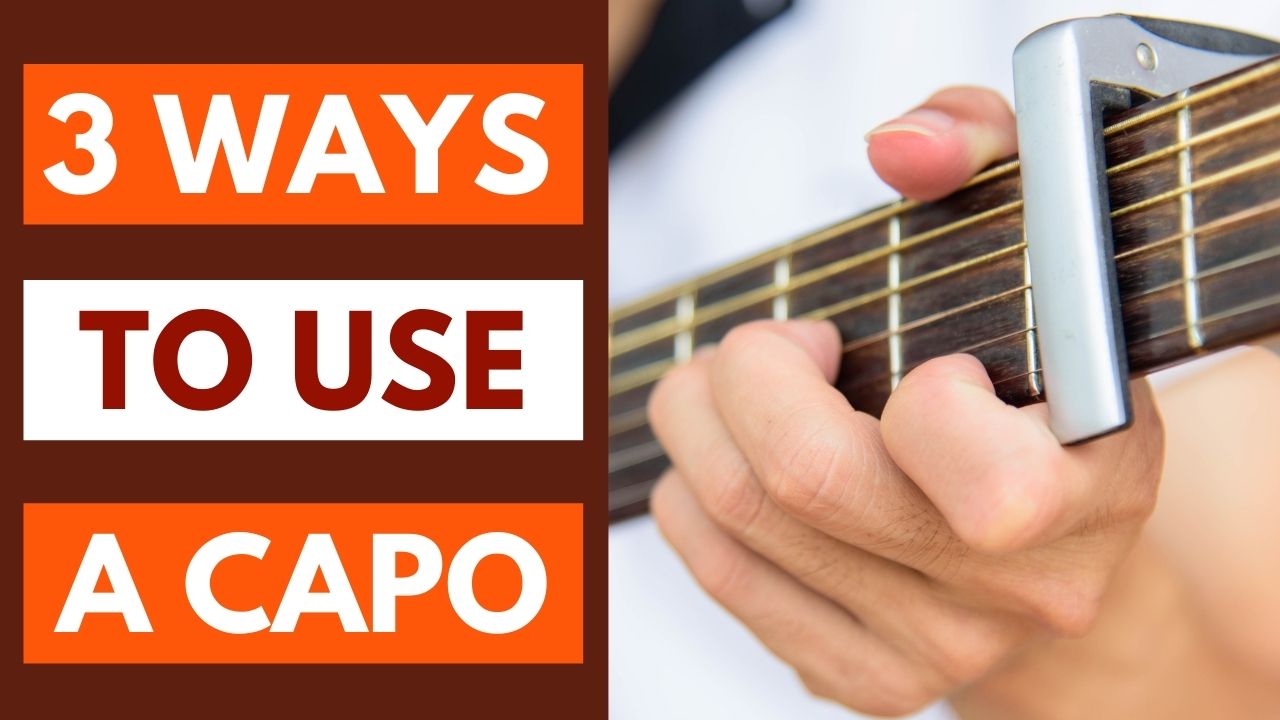3 Creative Ways To Use A Capo On Guitar
by Simon Candy
 In this video, I show you 3 ways to use a capo on your guitar.
In this video, I show you 3 ways to use a capo on your guitar.
A capo is a wonderful tool for creating music on your instrument. Some people think it’s cheating to use a guitar capo. I laugh at such ignorant views (LOL!)
A guitar capo is anything but a device for “cheating”. Rather, the capo expands your creative possibilities when playing guitar.
In this lesson, you learn the following ways to use a capo:
1: Change Key Without Changing Chords
You will learn how to change key without changing the chord shapes you are using. This is very handy when you need to change key, for example, to suit a singers vocal range.
2: Replace Bar Chords
Bar chords sound different to open chords.
What’s possible with open chords is not necessarily so with bar chords and vice versa.
Some keys/songs have a lot of bar chords in them.
A capo is a great tool for maintaining the use of open chords, no matter what key you are in, allowing you to access the sounds that come with “open chord” playing.
3: Same Key, Different Chords
Sometimes there is no need for a key change, however you might prefer to use a certain set of open chord shapes. The capo allows you to do this without having to change key.
I love using a capo in this way in my playing. I will show you all the possible positions you can capo for a particular key on your guitar. There are several options, each providing you with different and unique possibilities for your playing.
Check out the video below to learn how to use a capo on your guitar:
Guitar Capo Video Content
1. Change Key Without Changing Chord
Typical chord progression in G Major:
 • Option 1: Capo at 2nd fret to transpose this progression to A Major while still using the chord shapes of G Major (ie. the percieved key)
• Option 1: Capo at 2nd fret to transpose this progression to A Major while still using the chord shapes of G Major (ie. the percieved key)

• Option 2: Capo at 5th fret to transpose this progression to C Major while still using the chord shapes of the percieved key of G Major.
 2. Replace Bar Chords
2. Replace Bar Chords
Typical chord progression in E Major:

• Option 1: Capo at 2nd fret to play this E Major progression using the chord shapes of D Major (ie. the percieved key)

• Option 2: Capo at 4th fret to play this E Major progression using the chord shapes of C Major (ie. the percieved key)

• Option 3: Capo at 7th fret to play this E Major progression using the chord shapes of A Major (ie. the percieved key)

• Option 4: Capo at 9th fret to play this E Major progression using the chord shapes of G Major (ie. the percieved key)

3. Same Key, Different Chords
Typical chord progression in Bb Major Progression:
 • Capo at 3rd fret to play this Bb Major progression using the chord shapes of G Major (ie. the percieved key)
• Capo at 3rd fret to play this Bb Major progression using the chord shapes of G Major (ie. the percieved key)
 • Embellished Bb Major progression capo'd at the 3rd fret using the chord shapes of G Major (ie. the percieved key)
• Embellished Bb Major progression capo'd at the 3rd fret using the chord shapes of G Major (ie. the percieved key)

 Learn more creative ways to use a capo on guitar
Learn more creative ways to use a capo on guitar